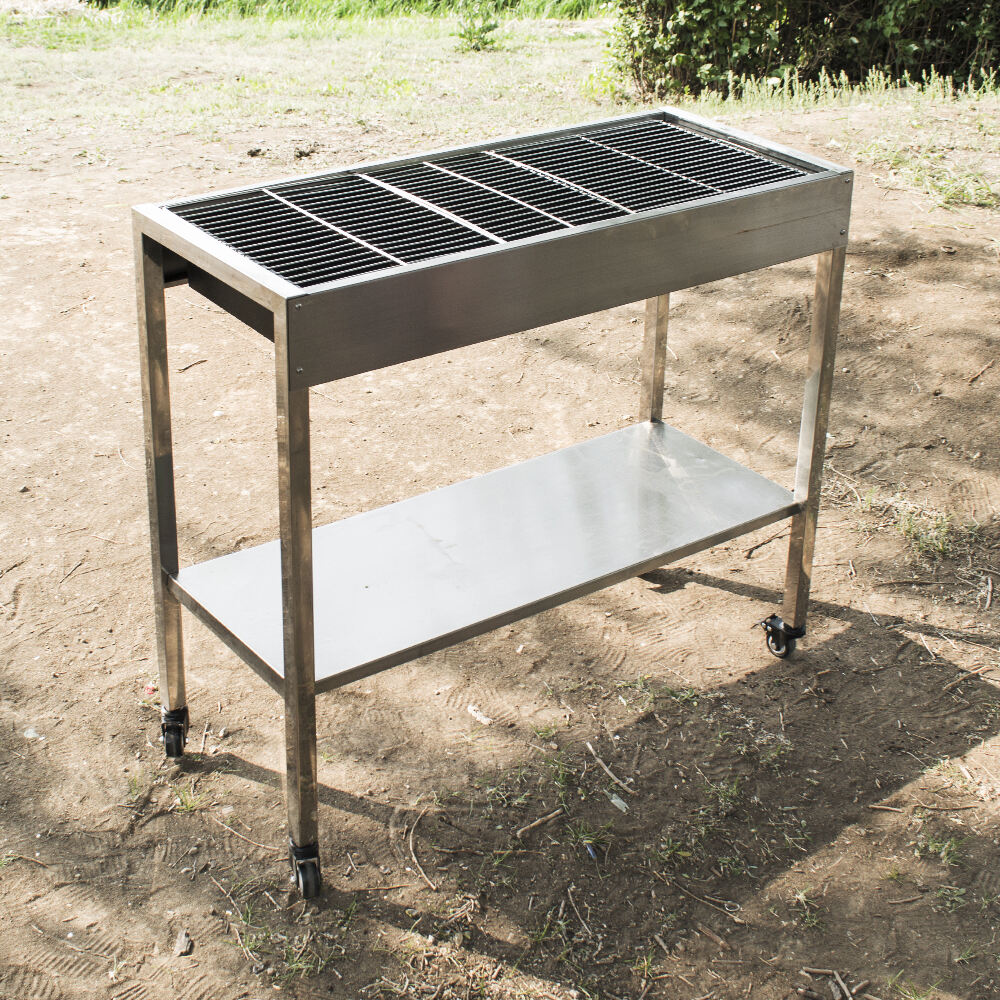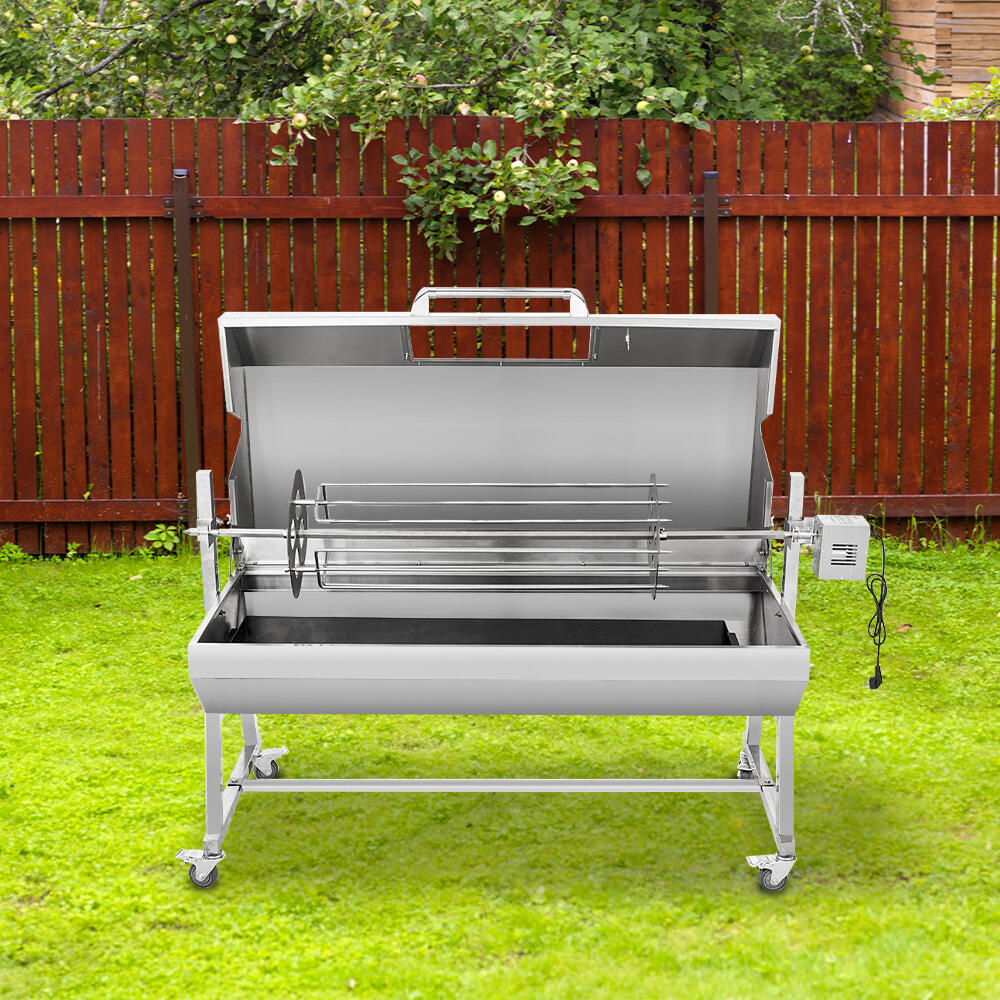Mastering the Art of Argentinian-Style Grilling at Home
The sizzle of perfectly marbled meat, the aromatic smoke wafting through the air, and the gathering of family and friends around a traditional parrilla grill creates an authentic South American barbecue experience right in your backyard. A parrilla grill isn't just another cooking appliance – it's a gateway to a rich culinary tradition that transforms ordinary meals into memorable feasts.
Whether you're an experienced grill master or just beginning your journey into authentic Argentinian-style grilling, selecting the right parrilla grill is crucial for achieving those perfectly charred steaks and smoky vegetables that define this cooking style. Let's explore everything you need to know about choosing and using these remarkable grilling stations.
Essential Features of an Authentic Parrilla Grill
Construction Materials and Build Quality
A high-quality parrilla grill is primarily constructed from heavy-gauge stainless steel or thick carbon steel, ensuring excellent heat retention and durability. The grate system, typically made of V-shaped bars, allows fat to channel away from the fire while still capturing those essential smoky flavors. Look for welded construction rather than bolted joints, as this provides better stability and longevity.
The best parrilla grills feature adjustable grate heights, allowing you to control the cooking temperature by raising or lowering the cooking surface relative to the coals. This crucial feature gives you precise control over your cooking process, whether you're searing a steak or slowly roasting vegetables.
Heat Management Systems
Superior parrilla grills incorporate thoughtful design elements for temperature control. The firebox should be spacious enough to maintain a consistent bed of coals while allowing for proper air circulation. Look for models with adjustable air vents that help regulate oxygen flow and, consequently, the intensity of your fire.
Many modern parrilla grills also feature ash management systems that make cleanup easier while ensuring proper airflow isn't compromised during long cooking sessions. This attention to ventilation detail is what separates exceptional grills from basic models.

Size and Space Considerations
Cooking Surface Area
When selecting a parrilla grill, carefully consider your typical cooking needs. A family of four might be well-served by a grill with 600-800 square inches of cooking surface, while those who frequently entertain should look at larger models offering 1,000 square inches or more. Remember that authentic Argentinian grilling often involves cooking different cuts simultaneously at varying heights.
The width of the grilling surface is particularly important, as it allows you to create different temperature zones and cook various items simultaneously. A wider surface also provides more flexibility for arranging coals and managing heat distribution.
Installation Requirements
Before purchasing a parrilla grill, evaluate your available space. These grills can be substantial, and you'll need adequate clearance not just for the unit itself but also for safe operation. Consider whether you want a built-in model integrated into an outdoor kitchen or a freestanding unit that offers more flexibility in placement.
Factor in the need for proper ventilation and safety distances from structures. Many homeowners create dedicated grilling stations with storage for wood, tools, and preparation surfaces, so plan your space accordingly.
Fuel and Fire Management
Wood and Charcoal Selection
Traditional parrilla grilling relies on hardwood or a combination of hardwood and charcoal. Your grill should accommodate both fuel types effectively. Look for models with generous fuel storage areas and easy access for adding wood or charcoal during cooking sessions.
The best parrilla grills feature design elements that make fire management intuitive, such as side doors for adding fuel and adjustable air intakes that help maintain optimal burning conditions. Consider how easily you can arrange and manipulate the fuel bed during cooking.
Temperature Control Features
Effective temperature control is central to successful parrilla grilling. Premium models offer multiple adjustment mechanisms, including height-adjustable grates, adjustable air vents, and sometimes even motorized lifting systems. These features allow you to respond quickly to temperature changes and maintain precise control over your cooking.
Look for grills with built-in temperature gauges and good insulation properties that help maintain steady cooking temperatures. The ability to create and maintain different temperature zones is essential for traditional Argentinian grilling techniques.
Maintenance and Longevity
Cleaning and Care Requirements
A well-designed parrilla grill should include features that simplify maintenance. This includes removable ash trays, detachable grates for easy cleaning, and materials that resist rust and corrosion. Regular maintenance is crucial for both performance and longevity, so consider how easily you can access all parts of the grill for cleaning.
Quality grills often come with protective covers and may include specialized cleaning tools. Investigate the manufacturer's recommended maintenance schedule and ensure you're comfortable with the required upkeep before making your selection.
Warranty and Support
Investing in a parrilla grill is significant, so warranty coverage is an important consideration. Look for manufacturers offering comprehensive warranties that cover both materials and workmanship. The best companies provide detailed documentation, responsive customer support, and ready access to replacement parts if needed.
Consider purchasing from established manufacturers with proven track records in the market. This often ensures better long-term support and access to maintenance resources.
Frequently Asked Questions
How does a parrilla grill differ from standard barbecue grills?
A parrilla grill is distinguished by its V-shaped grates, adjustable height mechanisms, and design optimized for wood or charcoal cooking. Unlike standard grills, parrillas are specifically engineered for the high-temperature, direct-heat cooking style traditional in Argentinian barbecue, offering more precise control over heat exposure through adjustable grate systems.
What type of maintenance does a parrilla grill require?
Regular maintenance includes cleaning the grates after each use, removing ash, checking and cleaning the ventilation system, and protecting the grill from weather when not in use. It's also important to periodically inspect all moving parts and lubricate them as needed. Proper care can significantly extend the life of your grill.
What's the ideal size parrilla grill for home use?
For most home users, a parrilla grill with 600-800 square inches of cooking surface provides ample space for family meals. However, if you frequently entertain or cook for large groups, consider models with 1,000 square inches or more. Remember to factor in your available space and how often you'll use the grill when making your decision.

